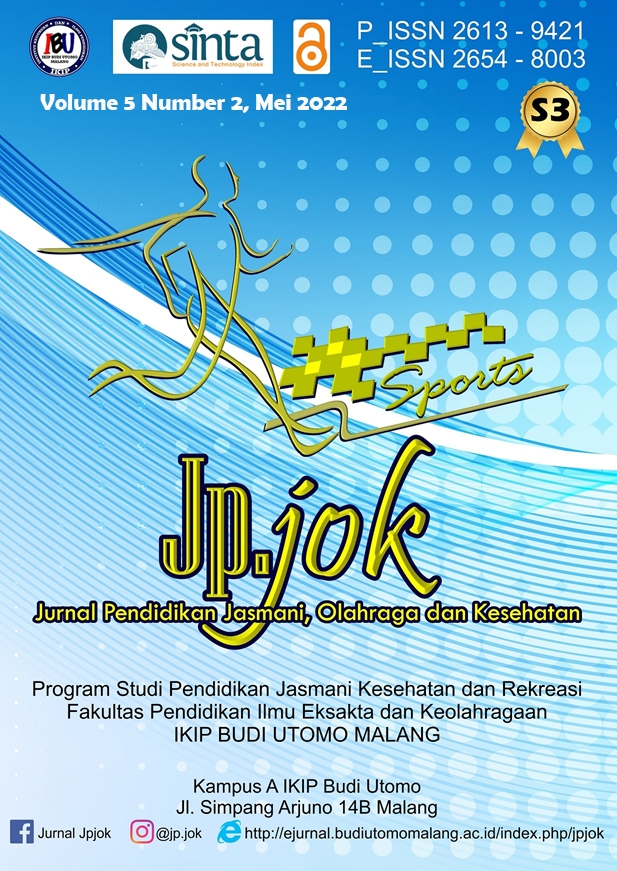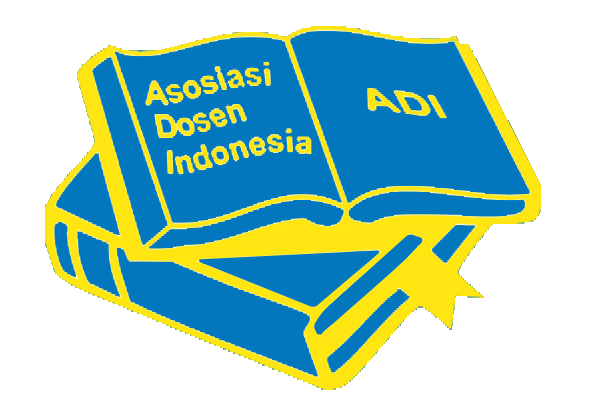Development of Aerobic Endurance Training Method (Oxidative Steady State) Through Android Aplication
Abstract
This study aims to develop an aerobic (oxidative steady-state) method of exercise based on an android application to improve the aerobic endurance of athletes, specifically in football. This application is designed according to the composition of aerobic endurance training. This application is beneficial in the current new normal situation, which requires players to practice independently. In addition, The application is expected to be a solution to the current situation—methods and steps in this study using the ADDIE model consist of 5 stages. The subjects in the study were two material experts, one media expert, and ten students who were learning about media users. The research was conducted at the Department of Sports Education, Riau University. The results of the development research tested in small groups were stated to be very feasible and suitable to be used as a guide to increase aerobic capacity. This application is still necessary to test in large groups in the use of this application to find out whether this learning media can be used by users widely
References
Adi, S., Aldapit, E., Nova, A., Dharmika Nugraha, P., Hutomo Bhakti, Y., & Bang Redy Utama, M. (2021). Virtual Multimedia Communication for Physical Distancing in Physical Education. Journal of Physics: Conference Series, 1779(1), 1–7. https://doi.org/10.1088/1742-6596/1779/1/012016
Dick, W., & Carey, L. (2001). The Systemic Design of Instruction. United States: Addison-Wesley Educational Publishers Inc.
Ferrari Bravo, D., Impellizzeri, F. M., Rampinini, E., Castagna, C., Bishop, D., & Wisloff, U. (2008). Sprint vs. interval training in football. International Journal of Sports Medicine, 29(8), 668–674. https://doi.org/10.1055/S-2007-989371
Fox, E. ., R.W, B., & Foss, M. . (1993). The Phsysiological Basis For Exercise and Sporth (Fifth edit). Iowa: Brown & Benchmark Publisher.
Helgerud, J., Christian Engen, L., Wisløff, U., & Hoff, J. (2001). Aerobic endurance training improves soccer performance. In Med. Sci. Sports Exerc (Vol. 33).
Helgerud, J., Engen, L. C., Wisløff, U., & Hoff, J. (2001). Aerobic endurance training improves soccer performance. Medicine and Science in Sports and Exercise, 33(11), 1925–1931. https://doi.org/10.1097/00005768-200111000-00019
Hoff, J., Wisløff, U., Engen, L. C., Kemi, O. J., & Helgerud, J. (2002). Soccer specific aerobic endurance training. British Journal of Sports Medicine, 36(3), 218–221. https://doi.org/10.1136/bjsm.36.3.218
Ittle, T. H. L., & Illiams, A. L. U. N. G. W. (2005). S a , m s , a p s p. 19(1), 76–78.
J, H., K, H., E, W., T, K., P, B., M, B., … J, H. (2007). Aerobic high-intensity intervals improve VO2max more than moderate training. Medicine and Science in Sports and Exercise, 39(4), 665–671. https://doi.org/10.1249/MSS.0B013E3180304570
Matjan, B. N. (2009). Komponen-komponen latihan dan faktor-faktor pendukung kualitas peak performance atlet. Jurnal Kepelatihan Olahraga, 1(1), 63–70.
Menz, V., Marterer, N., Amin, S. B., Faulhaber, M., Hansen, A. B., & Lawley, J. S. (2019). Running Low-Volume High-Intensity Interval Training: Effects on VO 2 max and Muscular Endurance. In ©Journal of Sports Science and Medicine (Vol. 18).
Mulyatiningsih, E. (2019). Metode Penelitian Terapan Bidang Pendidikan. Bandung: Alfabeta.
Perween, S. (2020). Comparison of sprint training and high intensity interval training on oxidative stress and aerobic capacity in male soccer players. Comparative Exercise Physiology, 16(5), 357–366. https://doi.org/10.3920/CEP190078
Putro, A. A., Suherman, A., & Sultoni, K. (2018). Aplikasi Program Kebugaran Daya Tahan Kardiovakular Berbasis Android. Jurnal Terapan Ilmu Keolahragaan, 3(1), 1. https://doi.org/10.17509/jtikor.v3i1.11276
Ronald, H., Ray, D., & Ugelta, S. (2017). Pengembangan Software Aerobic Capacity Dengan Menggunakan Bleep Test Berbasis Aplikasi Android. https://doi.org/10.17509/jtikor.v2i1.4177
Saputro, D. P., Adila, F., Wedi, S., & Putra, P. A. (2020). Aplikasi Olahraga : Digitalisasi Manajemen Tes Fisik Olahraga. 383.
Sporiš, G., Vučetić, V., Milanović, L., Milanović, Z., Krespi, M., & Krakan, I. (2014). Anaerobic Endurance Capacity In Elite Soccer, Handball And Basketball Players. In Kinesiology (Vol. 46). Kineziološki fakultet.
Sugiyono. (2019). Metode Penelitian Pendidikan (Kuantitatif, Kualitatif, Kombinasi, R&D, dan Penelitian Pendidikan). BAndung: Alfabeta.
Swandri, O. V., Baskora, R., Putra, A., & Suripto, A. W. (2018). Journal of Physical Education , Health and Sport The Development of Android-Based Multistage Fitness Test Soft- ware to Measuring Vo2 Max. 5(2), 69–72.
Tian, K., Qin, J., Huang, L., Long, M., Wu, J., Yu, S., & Yu, Y. (2006). The effect of aerobic and anaerobic endurance training on the regulating function of autonomic nervous system and its significance. Sheng Wu Yi Xue Gong Cheng Xue Za Zhi = Journal of Biomedical Engineering = Shengwu Yixue Gongchengxue Zazhi, 23(5), 1020–1023.
Widiyanto, M. Y. A. dan. (2014). Kemampuan Daya Tahan Anaerobik Dandaya Tahan Aerobik Pemain Hoki Putrauniversitas Negeri Yogyakarta. In MEDIKORA (Vol. 0).
Ziemann, E., Grzywacz, T., Łuszczyk, M., Laskowski, R., Olek, R. A., & Gibson, A. L. (2011). Aerobic and Anaerobic Changes with High-Intensity Interval Training in Active College-Aged Men. Journal of Strength and Conditioning Research, 25(4), 1104–1112. https://doi.org/10.1519/JSC.0b013e3181d09ec9
Copyright (c) 2022 Jp.jok (Jurnal Pendidikan Jasmani, Olahraga dan Kesehatan)

This work is licensed under a Creative Commons Attribution-ShareAlike 4.0 International License.
Authors retain copyright and grant the journal right of first publication with the work simultaneously licensed under a Creative Commons Attribution 4.0 International License that allows others to share the work with an acknowledgement of the work's authorship and initial publication in this journal.





.png)






